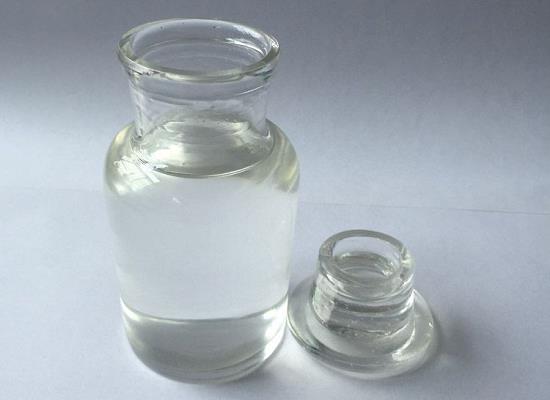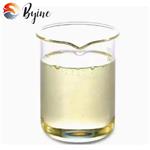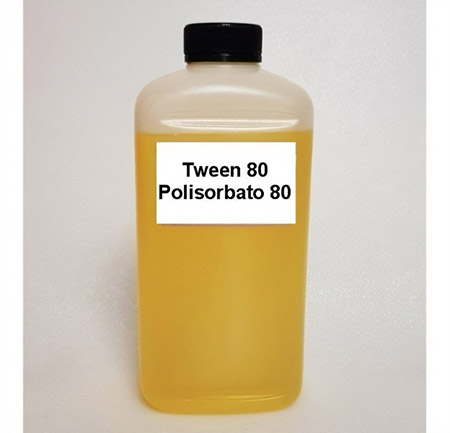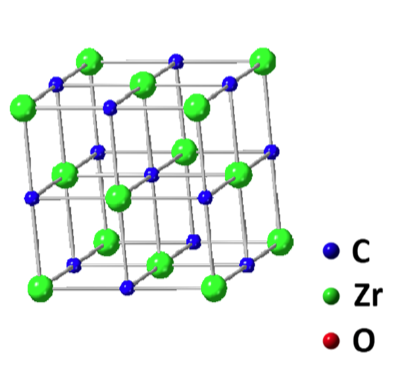Tween 80: Structure, Solution and Surface Active Properties
General Description
Tween 80, a nonionic surfactant, is widely used in protein biopharmaceutical formulations. Its structure comprises fatty acid esters of polyoxyethylene sorbitan, with hydrophobic fatty acid side chains and hydrophilic ethylene oxide subunits. In solutions, Tween 80 minimizes exposure of its hydrophobic part to water by orienting itself, forming a surface layer at interfaces. This surfactant's adsorption at interfaces, driven by the hydrophobic effect, can reduce protein binding. Understanding Tween 80's solution and surface active properties, including micelle formation at the critical micelle concentration, is crucial for its applications in biopharmaceutical formulations.

Figure 1. Tween 80
Structure
Tween 80, also known as polysorbate 80, is an amphipathic, nonionic surfactant that is widely used in the formulation of protein biopharmaceuticals. Its chemical structure consists of fatty acid esters of polyoxyethylene sorbitan. Polysorbate 80 belongs to a group of surfactants called polysorbates, which also includes polysorbate 20. The structure of Tween 80 is characterized by a common backbone, which is a sorbitan ring with ethylene oxide polymers attached at three different hydroxyl positions. The hydrophobic nature of the polysorbate is provided by the fatty acid side chains, while the hydrophilic nature is provided by the ethylene oxide subunits. The fatty acid moieties are attached to the ethylene oxide oxygen through an ester linkage. Polysorbate 80 differs from polysorbate 20 in the structures of its fatty acid side chains. The laurate moiety of Tween 80 is a straight chain hydrocarbon structure, whereas the oleate moiety of Tween 80 contains a double bond, resulting in a kink in the hydrocarbon chain. In the manufacturing of drugs, both biotechnology and pharmaceutical, polysorbate 80 is commonly sold under the trade name Tween 80. It is important to note that the terms polysorbate and Tween are used interchangeably in the literature. Polysorbate solutions available in the market are typically mixtures of different fatty acid esters. The composition of these mixtures may vary depending on the manufacturer. For instance, polysorbate 20 contains primarily lauric acid, while Tween 80 is predominantly composed of oleic acid. Other saturated and unsaturated fatty acids may also be present in smaller amounts. It is worth mentioning that Tween 80 is mainly derived from plant sources and is the preferred choice for use in biotechnology products. 1
Solution and Surface Active Properties
Tween 80, a surfactant commonly used in various applications, exhibits solution and surface active properties. In aqueous solutions, surfactants like Tween 80 tend to minimize exposure of their hydrophobic portion to water by orienting themselves appropriately. At air/water or solid/water interfaces, these surfactants accumulate, forming a surface layer with their hydrophilic ends exposed to water. The adsorption of Tween 80 at interfaces can compete with protein adsorption, potentially reducing protein binding or minimizing damage to adsorbed proteins. This adsorption is driven by the hydrophobic effect, which can be described using the Gibbs free energy equation. At temperatures near 25°C, the entropic term dominates, while the enthalpic term becomes significant at higher temperatures. The temperature at which the enthalpic term equals zero is called the Th, or the temperature of minimum solubility. Within the temperature range of 4–37°C commonly used in liquid protein formulation studies, the entropy term prevails. When polysorbates like Tween 80 transfer into water, it is assumed that water forms cage-like structures around their hydrocarbon chains, resulting in a loss of solvent entropy. However, the hydrophobic effect drives the adsorption of polysorbate at the surface, removing the hydrophobic surface from water molecules and contributing favorably to solvent entropy. At higher polysorbate concentrations, van der Waals contact between hydrocarbon chains at the interface becomes possible. Even at low concentrations, surfactant molecules adsorb at interfaces due to the hydrophobic effect. The establishment of equilibrium at the interface may take time, which can be relevant in preventing protein surface adsorption and aggregation during acute stresses. Surfactant micelles formed by Tween 80 are spherical aggregates where the ethylene oxide subunits face outward in contact with the surrounding solution, while the hydrocarbon tails reside in the center, away from water. As the surfactant concentration increases, monomers associate to form micelles within a specific concentration range known as the critical micelle concentration (CMC). In summary, Tween 80 exhibits solution and surface active properties, with its adsorption at interfaces driven by the hydrophobic effect. Understanding these properties is crucial for various applications involving Tween 80, such as in protein biopharmaceutical formulations. 1,2
Reference
1. Kerwin BA. Polysorbates 20 and 80 used in the formulation of protein biotherapeutics: structure and degradation pathways. J Pharm Sci. 2008; 97(8): 2924-2935.
2. Tanford C. The hydrophobic effect: Formation of micelles and biological membranes. 2nd ed. New York: John Wiley & Sons. 1973.
Related articles And Qustion
See also
Lastest Price from Tween 80 manufacturers

US $150.00/kg2025-11-27
- CAS:
- 9005-65-6
- Min. Order:
- 1kg
- Purity:
- 99%
- Supply Ability:
- 20tons

US $0.00-0.00/kg2025-09-20
- CAS:
- 9005-65-6
- Min. Order:
- 1kg
- Purity:
- 99%
- Supply Ability:
- 1000kg




